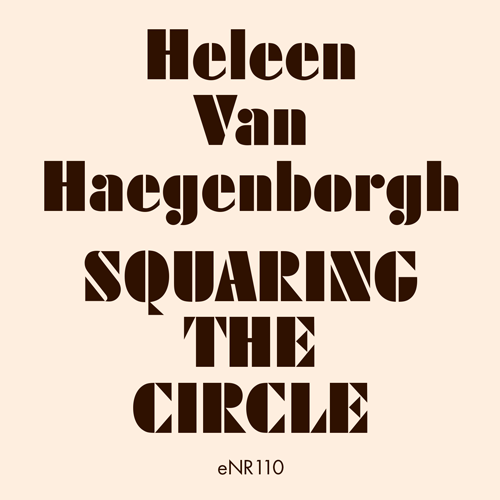
 ☰
☰
![]()

Bill Meyer, Dusted Magazine (25/08/2023)
Sometimes, awareness of an artist’s inspiration will help you grasp their work. With Squaring The Circle, that’ll only get you so far. Squaring The Circle is Belgian composer Heleen Van Haegenborgh’s response to Johan De Widle’s Pi — Fugue pour les survivants, a graphic piece representing the number pi which is extended each year by its maker. While the mathematic foundation of this CD-length piece’s contents are hard to discern, their sounds just might give you a glimpse into the infinite. Performed by the composer and GAME, a percussion quartet, it combines the reverberant tones of drums, vibraphones, bells and other strikable metal objects with close-up, voltage-derived zaps. Even coming out of a home hi-fi, it creates a sense of ever-expanding space.
Clive Bell, The Wire (09/05/2023)
"How I want a drink, alcoholic of course, after the heavy lectures involving quantum mechanics." The line is a mnemonic to recall the value of the infinite number pi, devised a century ago by British physicist James Jeans. Pi continues to fascinate, offering a portal into mathematical mysteries. Helen Van Haegenborgh is a pianist, improvisor and composer in Ghent, Belgium, and her new release Squaring The Circle for percussion quartet and electronics is a stirring musical journey into the heart of pi-manipulated chaos.
The work is also a response to a visual piece in Van Haegenborgh's home town: Pi, Fugue Pour Les Survivants by Johan De Wilde, an ongoing graphic grid of brightly coloured strips which De Wilde adds to each year. The image is reproduced in the CD booklet, and it has a handmade quality, somewhere between a tapestry and a scientific graph recording an experiment. However Van Haegenborgh's music stands proud and independent, unreliant on pictures or maths. It's simply a very strong performance and surely some form of collaboration between the composer and her young percussionists: Aya Suzuki, Anita Cappuccinelli, Lucas Messer and Diego Sáenz Mateo, together known as GAME.
Employing a houseful of instruments - from the roar of gongs and timpani to the tuned crotales and tubular bells, via the joy of a "spiral thrash" - the group generate a single 45 minute piece that ebbs and flows. There's plenty of variety without rhetoric or hysteria, and enough space to make listening simple and pleasureable. As Van Haegenborgh puts it, a sense of freedom, naturalness and directness is what she always struggles for.
Electronic sound is used modestly at first, but around halfway through the electronics kicks in and provides extra excitement.
Everything is excellently recorded by Peter Desmedt in his Ghent studio. Ten years ago Van Haegenborgh was performing her Signaux for piano and 23 foghorns to a large audience outdoors in the Ghent docks. Squaring The Circle denotes a composer whose capacity for intrigue persists.
Peter Margasak, The Best Contemporary Classical on Bandcamp: January 2023 (31/01/2023)
For this sprawling percussion quartet piece, the Belgian pianist and composer Heleen Van Haegenborgh drew inspiration from a large-form drawing by the artist Johan De Wilde entitled Pi, a work that develops every year when De Wilde visits the S.M.A.K. (the Municipal Museum of Contemporary Art), the Ghent museum where it is displayed, to add new drawings. Its grid-like design is built from a theoretically endless series of stripes of changing colors and lengths. It's a nice rhyme with the concept of π or "pi," the infinite number used to calculate the area and the circumference of a circle. Van Haegenborgh thickens the plot with the title of this seven-movement work—performed here by GAME, a group comprised of Aya Suzuki, Anita Cappuccinelli, Lucas Messler, and Diego Sáenz Mateo. With an arsenal of more than 70 different percussion devices in addition to electronics, Squaring the Circle vibrates, floats, and writhes through a constantly shifting procession of atmospheres, episodes, and collisions. If there's any kind of narrative structure, I'm not getting it, but the measured flow of layered sound and the way it perpetually billows into fresh terrain is reward enough. The extensive array of percussion never sounds excessive, and the composer is far more interested in vivid evocations and dazzling sonic colors than virtuosity—even though this is anything but a technical cakewalk.